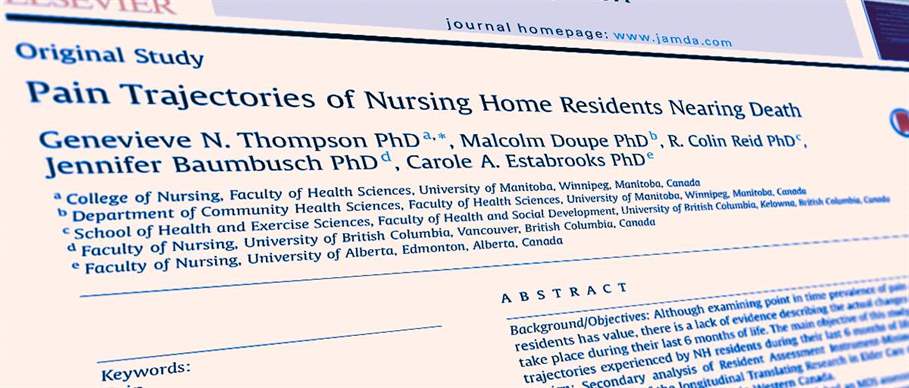Published
on
October 23, 2017
| 2,157 views
| 0 followers
members are following updates on this item.

Although examining point in time prevalence of pain among nursing home (NH) residents has value, there is a lack of evidence describing the actual changes (ie, trajectories) in pain that take place during their last 6 months of life. The main objective of this study is to describe the major pain trajectories experienced by NH residents during their last 6 months of life.
Secondary analysis of Resident Assessment Instrument-Minimum Data Set (MDS) 2.0 data captured as part of the longitudinal Translating Research in Elder Care data repository.
Twenty-seven urban NHs in Western Canada.
A total of 962 NH residents who died, had an MDS assessment completed within 30 days of death, and resided in a NH for at least 6 months. Pain trajectories were stratified by residents who were not severely cognitively impaired [Cognitive Performance Scale (CPS) ≤3] and those with severe impairment (CPS ≥4) at death.
MDS-Pain Scale; CPS.
In the 6 months before death, 60.1% of residents without severe cognitive impairment experienced consistently low pain; 34.6% reported experiencing either moderate to severe pain or significant increases in pain during this same period of time, and only 5.3% experienced any degree of pain improvement. When the trajectories were examined, most residents without severe cognitive impairment experienced no to mild pain in the time before their death (65.5%); however, we identified a group of residents who exhibited a pattern of pain that worsened or remained consistently high right until death (38.2%). Although the proportion of residents with "low/mild" pain trajectories was statistically greater among those who were severely impaired vs those without severe cognitive impairment, across both cognitive impairment groups, the general trend in pain trajectories is similar; with about 60% of residents experiencing either consistent low or mild pain in their last 6 months of life, and about 34% experiencing either substantially high or increasing pain levels.
Although a majority of NH residents experienced consistently low or improved pain levels in their last 6 months of life, a substantial number experienced consistently high or substantially worsening pain levels during this same time period. These results highlight the need to better manage pain levels for some NH residents during this important period of time.
Copyright © 2017 AMDA – The Society for Post-Acute and Long-Term Care Medicine. Published by Elsevier Inc. All rights reserved.
Page Options